Films to See: “The People Garden”
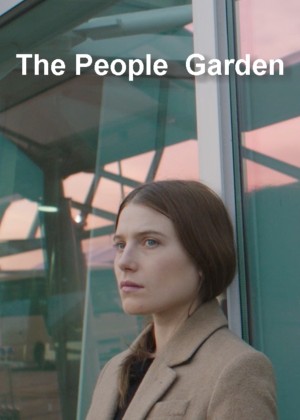 Nadia Litz has written and directed this unique story of grief and moving on. Sweetpea (Dree Hemingway, great granddaughter of Ernest) travels to a remote forest near Mount Fuji, Japan to end her relationship with her rock-star boyfriend Jamie (François Arnaud). She arrives at the airport expecting to see Jamie but is met by enigmatic Mak (Jai West) who takes her to a mysterious forest where Jamie is filming his latest music video. Except Jamie is missing and Sweetpea’s efforts to find him lead her to clash with the music video’s model, Signe (Pamela Anderson) and draw guarded attention from Mak. In this beautiful and sinister setting, Sweetpea must face the truth about what she wants while she helps Mak free himself from his own secret pain.
Nadia Litz has written and directed this unique story of grief and moving on. Sweetpea (Dree Hemingway, great granddaughter of Ernest) travels to a remote forest near Mount Fuji, Japan to end her relationship with her rock-star boyfriend Jamie (François Arnaud). She arrives at the airport expecting to see Jamie but is met by enigmatic Mak (Jai West) who takes her to a mysterious forest where Jamie is filming his latest music video. Except Jamie is missing and Sweetpea’s efforts to find him lead her to clash with the music video’s model, Signe (Pamela Anderson) and draw guarded attention from Mak. In this beautiful and sinister setting, Sweetpea must face the truth about what she wants while she helps Mak free himself from his own secret pain.
Why You Might Like “The People Garden”
“The People Garden” is an intricacy of subtle acting and cinematic language that delivers deeper meaning. Cinephiles will appreciate that the story is in the details – from the forest’s sinister allure to simple objects like the brown paper bags – the first of which is secreted away beneath Mak’s bed – that gradually become powerful symbols. In the final scene of 2 characters driving away from Mount Fuji, each one holds a paper bag. These objects are by now so infused with meaning that the scene leads us to a satisfying conclusion. You can view the trailer and buy tickets for “The People Garden” here.
Written by Cathie McCready
Cathie McCready is a film-buff who is writing her 1st novel.
Meet the Makers: “A Legacy of Whining” Writer, Director, Actor Ross Munro
“Meet the Makers” is a series of interviews to introduce the filmmakers of the 2016 Willson Oakville Film Festival. Answers are edited for clarity and space.
ABOUT THE FILMMAKER: ROSS MUNRO, writer/director/actor
Ross Munro is an actor and writer, known for Broken Palace (2014), A Legacy of Whining(2016) and Brewster McGee (2000).
ABOUT THE FILM, “A LEGACY OF WHINING”
The past ain’t all it’s cracked up to be when two former high school friends reunite thirty years later in a painfully comedic and bittersweet rollercoaster of an evening.
Q: What kind of film did you want to make?
Ross: A buddy comedy. I grew up watching movies in the ‘70’s and I saw buddy movies where there’s a tradition of humour. There’s banter between the buddy characters and the buddies are matched for comedic effect. I watched Bob Hope and Bing Crosby. They had a lot of banter back and forth – even when faced with serious trouble – and they often used sarcasm to comment on the problems in the story. I liked these movies and they were an inspiration that led me to do a buddy comedy.
Q: Help us understand the buddies, Mitch and Dunc.
Ross: Mitch and Dunc reunite 30 years after high school. When they meet in the airport, they want this to be a new beginning but it doesn’t take long for Dunc to remember how Mitch used to bother him. Mitch, who is the character I play, has barely changed. We all know people like that – living in the past. Mitch hasn’t really progressed. Given the opportunity to reunite with his high school friend, he wants everything to be the same as it was back then. Making Mitch an actor feeds into the idea that he lives in a fantasy world. I wanted to contrast Mitch with Dunc. Dunc has progressed but in a way that’s cynical and hardened. Dunc is a drinker and a womanizer with a broken marriage. He criticises Mitch; he’s like ‘the devil on your shoulder’ that reminds you of your failings. In this case Mitch is a failed actor. They’re 2 sides of the same coin.
Q: What are the themes in “A Legacy of Whining”?
Ross: As it says in the film’s description, “The past ain’t all it’s cracked up to be.” The big theme is male midlife crisis. Mitch sees a better version of himself in his fantasies while Dunc talks big but he’s really just a drinker and a womanizer. Mitch is at a crossroads in his acting career; he has to answer to the choices he’s made. Has he wasted his life? Did he make choices that led to failure? The title says it – “A Legacy of Whining”. Many people reach a time in their lives when they wonder, “What’s my legacy?” For Mitch the theme of legacy creates painful humour because his life might not have any meaning. The dynamic between Mitch and Dunc is like that between Laurel and Hardy – the insults and slights; Mitch having his dreams ridiculed by Dunc. By looking at each other’s lives, both characters are seeing how other choices could have led to other kinds of failure. We all want to leave a legacy. For the average person, being fondly remembered by their children is enough for them to be proud and happy.
Q: Who is this film for?
Ross: I believe even though the main characters are 50-something males, the story is universal. It asks the question, “Who am I?” At different ages we all feel angst over making life choices. We wonder, “Am I enough?” Another audience group who will appreciate the film are people who have a broad knowledge of film and genres. They’ll get the references to movies of other decades like “Five Easy Pieces” and the Fred Astaire musicals. I use movie references throughout – especially in Mitch’s fantasy sequences.
Q: What do you want the audience to take away from this film?
Ross: I want them to be entertained and laugh and be invested in the world of the movie. I wanted to create a nocturnal dreamlike world where anything can happen. I hope they might see a little bit of themselves or relate to things in their own lives. Though not everyone reunites with an old buddy after 30 years, we can find these interpersonal dynamics in many relationships. We can all relate to painful self-discovery.
Q: Is there anything more you’d like the audience to know about the film?
Ross: A lot of Canadian independent films are a labour of love. My wife, Marie is the producer of “A Legacy of Whining” but she wasn’t originally a producer. She’s a graphic designer. To help me on this journey to bring this film to the light of day, she went out and learned all she could about producing. Everybody on this film worked hard and sacrificed. Now getting in front of an audience is amazing for us. Marie and I are excited to come to Oakville.
Interview by Cathleen MacDonald
Cathleen MacDonald is a writer and filmmaker.
Films to See: “Scratch”
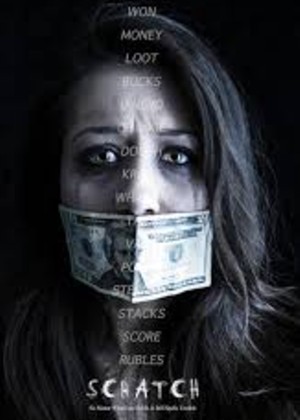 The heist movie genre gets a makeover for a broader audience. Nice girl everywoman, Samantha is first seen as the bewildered ‘last person standing’ amidst the bloody aftermath of a gangland gunfight. From here we go back to see how she got into this mess. In this gritty and sometimes darkly comedic story, Samantha is a rookie armoured truck security guard who quickly finds herself caught between corrupt coworkers and the mob. She is joined by a fresh cast that includes brash gang ‘girlfriend’, Gigi who torments a pair of Russian thugs, and a racist homophobe who gets comeuppance from an openly gay gangster. When the last bullet is fired and the police investigation hits a dead end, prepare yourself for a surprise.
The heist movie genre gets a makeover for a broader audience. Nice girl everywoman, Samantha is first seen as the bewildered ‘last person standing’ amidst the bloody aftermath of a gangland gunfight. From here we go back to see how she got into this mess. In this gritty and sometimes darkly comedic story, Samantha is a rookie armoured truck security guard who quickly finds herself caught between corrupt coworkers and the mob. She is joined by a fresh cast that includes brash gang ‘girlfriend’, Gigi who torments a pair of Russian thugs, and a racist homophobe who gets comeuppance from an openly gay gangster. When the last bullet is fired and the police investigation hits a dead end, prepare yourself for a surprise.
Why You Might Like “Scratch”
“Scratch” is an entertaining ride that elevates the heist movie genre by subverting some of its stereotypes and injecting a dark comedic undertone. Fans of action films will enjoy seeing the bad guys posturing and battling for power and money while a broader audience will appreciate the atypical characters and smart clues that unfurl in the final minutes. You can view the trailer and buy tickets for “Scratch” here.
Written by Cathleen MacDonald
Cathleen MacDonald is a writer and filmmaker.
Meet the Makers: “Scratch” Director, Maninder Chana
“Meet the Makers” is a series of interviews to introduce the filmmakers of the 2016 Willson Oakville Film Festival. Answers are edited for clarity and space.

ABOUT THE FILMMAKER: MANINDER CHANA, writer/director
An award-winning writer, director, producer and actor, Maninder Chana was the driving force behind the comedy troupe ‘Mixed Nuts’. He is the writer of the feature film ‘Cell 213’, and is the writer-director of the film, ‘Little Terrors’. You can meet Maninder following the screening of “Scratch” on Saturday, June 25, 9:30PM.
ABOUT THE FILM: “Scratch” is about a female rookie armoured truck guard who is caught between her co-workers’ plot to rob their own truck and greedy gangsters desperate to grab the loot.
Q: How would you describe the comedy style and tone of the film, “Scratch”?
Maninder: Dark comedy. It starts comedic then switches gears to something more serious then switches tone again when everything goes south. I have a comedy background – I used to be in a comedy troupe – and I took the elements of the heist genre but brought a dark comedy tone to it.
Q: This film plays with the elements and tropes of the heist genre. How did this develop?
Maninder: I like deconstruction pieces. This is a deconstruction of a heist movie. To go back to the beginning, I was approached by the producer, Michael Dragnea, who had seen my film, “Little Terrors”. When I was first told the concept, it struck me as being like films I’d seen before, right down to all the characters being white. After some discussions with Michael, I reworked the idea. I stuck to the spirit of the story but I took what was basically a linear, straightforward tale and turned it on it’s head. It was important to not do the same old thing – like it was important to me to not have the black characters killed first as they so often are in American films. Another character that changed a lot from the original script was Steve. He’s the one who comes up with the great idea to pull off the heist. I made him a racist, homophobic, misogynistic guy who’s in this situation with 2 black guys and a gay gangster. What could be more complicated and terrifying for a racist homophobe? I also cast against stereotypes. I like multicultural casts, so I wanted Russians who could actually speak Russian – not English-speaking actors affecting a bad Russian accent. With the recent debate at the Oscars about the problem of all-white casting (#oscarssowhite), I believe that one way we can change that is to go out and cast multicultural. I have a great casting director (Sweeney MacArthur) who found good actors of colour. We found J.J. Reville who plays the transvestite singer, Gigi, who’s kidnapped by the Russian gangsters. Instead of being a helpless victim, Gigi gives the bad guys a hard time. And of course, we found Julie Romaniuk as Samantha. She’s believable as a straight up character but there’s also a femme fatale quality about her; she’s more than an innocent victim.
Q: Samantha seems at first to be an unassuming and incorruptible protagonist but there’s more to her. Help us understand her character.
Maninder: Samantha (played by Julie Romaniuk) is from a poor background and she’s struggling to make it on her own. Without giving too much away – she needs this steady job with good pay. We perceive her as a goody two-shoes who is thrown in with men who, unknown to her, are planning a heist. She’s a fish out of water and everything that can go wrong, goes wrong. Instinct kicks in as she tries to save herself.
Q: For what audience did you make “Scratch”?
Maninder: The film evolved in such a strange way. It was originally for an action movie audience. Then I rewrote it to bring in a dark comedic element and also a bit of artistry. The film’s appeal is broader than any niche. It’s for people who like action and dark comedy. I didn’t want to make a pretentious film. My last film, “Little Terrors” was serious, so I wanted to have fun with this one.
Q: What do you want the audience to take away from “Scratch”?
Maninder: I want them to have a good time. I want them to relax and lose themselves for a couple of hours. You have to use your brain a bit to put together the pieces of the puzzle but it’s fun and uncomplicated. Enjoy the ride.
Interview by Cathleen MacDonald
Cathleen MacDonald is a writer and filmmaker.
Meet the Makers: “The Flying Stars”, Allan Tong and Ngardy Conteh George
“Meet the Makers” is a series of interviews to introduce the filmmakers of the 2016 Willson Oakville Film Festival. Answers are edited for clarity and space.

ABOUT THE FILMMAKERS: ALLAN TONG, co-director/writer/producer
Allan is a Toronto filmmaker who wrote and directed the shorts “Little Mao” and “I Want To Be a Desi”, which Bravo aired after the film enjoyed award-winning festival runs. His short drama, “Grange Avenue” (2008) also played festivals and was broadcast on the Canadian Broadcasting Corporation. Previously, Allan apprenticed as a documentary director and producer at the National Film Board of Canada. You can meet co-director and writer, Allan Tong following the screening of “The Flying Stars” on Sunday, June 26, 12:30PM.
 NGARDY CONTEH GEORGE, co-director/editor/producer
NGARDY CONTEH GEORGE, co-director/editor/producer
As a Sierra Leonean-Canadian, Ngardy Conteh George wants to tell stories of the African Diaspora. As a director she has achieved this with “Soldiers for the Streets”, a short documentary for the NFB, broadcast on CBC Television and Literature Alive, and a documentary series featuring Caribbean-Canadian authors broadcast on Bravo!
ABOUT THE FILM: “The Flying Stars” tells the story of war amputee soccer players in Sierra Leone who are struggling with the lingering trauma caused by the horrors of war they suffered a decade ago.
Q: What drew you to this story?
Allan: In 2008 I saw a photo slideshow in Toronto that included shots by New York photographer, Fiona Aboud. Her photos and videos showed one-legged soccer players flying across the field – and these guys were faster on one leg than I was on two. I was personally inspired and I had this eureka moment where I knew I’d found a film. I had to know more about the people and this place, Sierra Leone, so I asked Fiona to connect me with some of the players and she did.
Ngardy: I was editing another project when Allan said that he wanted to make a film about amputee soccer players – or football as they call it there. I said I’d been looking to tell stories from Sierra Leone. I’m originally from Sierra Leone.
Allan: At the time I had no idea Ngardy was from there! It was fate.
Q: As you got deeper into the project, how did your feelings about the story evolve from the initial inspiration?
Allan: I originally wanted to follow the soccer team to the world championship but as we learned more about the characters and as the possibility of the team reaching the championship became less likely, we started to focus more on personal stories; especially the charismatic team captain, Bornor. He was very open about sharing his personal life and feelings and we learned he was suffering from post-traumatic stress disorder (PTSD). His experiences in the war – including having his leg amputated – had left him traumatised and angry. He was struggling to support his family as a person with a disability in one of the poorest countries in the world.
Q: Did something happen during filming that defined the final film? If so, what was it?
Ngardy: A lot of story decisions are made during editing, not during filming. While filming, we had a lot of story threads to follow. We filmed things that seemed minor at the time because we didn’t know, ‘will that be relevant?’ We filmed more players than the audience sees in the film. Later, when we looked at all the footage, we could see what stood out – what was the strongest material. The PTSD story became important. It was something lingering and haunting, so we followed that thread during editing. It’s important to understand that in Sierra Leone, mental illness isn’t treated the way it is here. There isn’t the support or access to medical care. Sometimes mental illness is treated spiritually by talking to a church pastor.
Q: You’ve talked about how hard it was to start this film but at what point did it become harder to keep going?
Allan: Finding more money was a constant struggle. We shot over 24 months and made trips back and forth to Sierra Leone. We had to pay for travel – flights and transportation while in the country – food, medical. It’s very expensive to fly to Sierra Leone and at the same time you’re taking all this time to look for funding and make the film while you still have to pay your own bills. We have to credit the Sundance Documentary Institute for their support throughout this project. When we had to go to Sierra Leone, they helped.
Ngardy: Trying to find time to shoot and edit the film often meant giving up income from paying work.
Allan: Other than money, we followed so many characters and some were more open than others. Bornor (the main character) was quite open about his personal life, his family, and emotions and he was a good speaker. Not everyone was as open – and some people, though they had amazing stories, couldn’t articulate them.
Ngardy: We had to stay in touch with people in between filming trips to stay connected with them; what was going on in their lives and to keep their interest and trust. It was important that they knew we weren’t just opportunists showing up with cameras. Sierra Leoneans have a perspective on foreign camera crews. During and after the war, the media showed up to cover stories, so there’s the impression that if you’re ‘western media’ you must have money and that you’re making lots of money with your film. If you just show up, film, and go away, you’re seen to be keeping the money for yourself. To maintain relationships of trust, we had to make it understood that we weren’t a rich media outlet – far from it. We were barely putting two pennies together.
Q: What are some of the universal themes in this film that are relatable for the average person?
Allan: Bornor is a provider. He has children who he’s trying to feed and he’s trying to keep a roof over their heads in one of the poorest countries in the world. Being an amputee is a stigma, so he has to find a way to show that he can do something deserving of respect. Being a football player gets him some respect. Football is as popular there as hockey is here.
Ngardy: There are themes of family and the need for family and belonging. These men are not always considered as being part of the community.
Allan: They’re outsiders and they find family in one another by playing ‘the beautiful game’.
Q: What impact is the film having?
Allan: It’s raising awareness about amputees in a country (Sierra Leone) that many people have never heard of. The film is being seen in the U.S., Canada, and it was on Al Jazeera in the Middle East. It’s going around the world.
Ngardy: The more people who see the film, the more Bornor and other amputees can benefit from changing attitudes. The amputees are seeking respect as valuable members of society. When their countrymen see this film on Al Jazeera, they see the amputees in a positive light. The film reaches out to show the players’ humanity. The players only want to be self-sufficient; not be begging in the streets. Sierra Leone has an extremely high unemployment rate. It’s hard enough for people who have two arms and legs to find work. Imagine what it’s like for an amputee.
Q: What do you want audiences to take away from the film?
Ngardy: I want people to see these guys’ stories and hear their own words. It’s their stories – no narrator – told in a respectful way without pity.
Allan: Be inspired. Bornor carries the scars of war – it’s not abstract – it’s not about pity. This is a real effect of war. Be haunted by it.
Interview by Cathleen MacDonald
Cathleen MacDonald is a writer and filmmaker.
FiIms to See: “The Flying Stars”
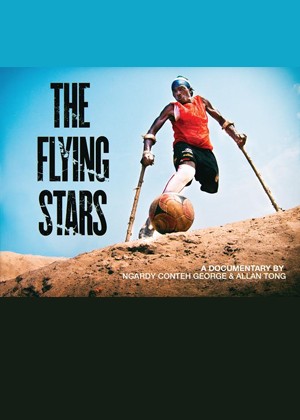 Have you ever wondered what your life would be like if, in a moment, you’d made a different decision? Would it be better, worse, or just different? Bornor Kargbo’s dream to be a war hero led him to become a soldier in Sierra Leone’s civil war. Instead he found horrors, regret, and despair. “The Flying Stars” is a beautifully shot documentary about the desperate lives of amputee soccer players in Sierra Leone and in particular, the story of Flying Stars team captain, Bornor. Like the thousands of Sierra Leonean war amputees, Bornor struggles to survive and to feed his family. To cope with his trauma, he finds a new dream to win the world amputee soccer championship. Co-directors Allan Tong and Ngardy Conteh George and their crew have created a visually stunning story of struggle, regret, and hope. By playing soccer and aspiring to the world amputee soccer championship, Bornor and his team vie for respect in a country where amputees are shunned and impoverished.
Have you ever wondered what your life would be like if, in a moment, you’d made a different decision? Would it be better, worse, or just different? Bornor Kargbo’s dream to be a war hero led him to become a soldier in Sierra Leone’s civil war. Instead he found horrors, regret, and despair. “The Flying Stars” is a beautifully shot documentary about the desperate lives of amputee soccer players in Sierra Leone and in particular, the story of Flying Stars team captain, Bornor. Like the thousands of Sierra Leonean war amputees, Bornor struggles to survive and to feed his family. To cope with his trauma, he finds a new dream to win the world amputee soccer championship. Co-directors Allan Tong and Ngardy Conteh George and their crew have created a visually stunning story of struggle, regret, and hope. By playing soccer and aspiring to the world amputee soccer championship, Bornor and his team vie for respect in a country where amputees are shunned and impoverished.
Why You Might Like “The Flying Stars”
“The Flying Stars” inspires us with the story of the human spirit pitted against the legacy of war’s cruelty. Beautifully shot and crafted, it captures life in Sierra Leone and gives us a look at the lives of Bornor, his family, and his teammates. Bornor is an unlikely ‘soccer star’ and his exceptional ability as a player must be seen to be believed. You can meet co-director Allan Tong following the Sunday, June 26th, 12:30PM screening of “The Flying Stars” and you can view the trailer for “The Flying Stars” here.
Written by Cathie McCready
Cathie McCready is a film-buff who is writing her 1st novel.
Meet the Makers: “8% No Limit” Lisa Lightbourn-Lay
“Meet the Makers” is a series of interviews to introduce the filmmakers of the 2016 Willson Oakville Film Festival. Answers are edited for clarity and space.
ABOUT THE FILMMAKER: LISA LIGHTBOURN-LAY is an award-winning documentary producer,director, editor, and cinematographer with over 20 years experience in live television, web, and documentary. As a filmmaker, her passion lies in telling stories that effect social change and give focus to issues and people who strive to make a difference.You can meet Lisa at the Willson Oakville Film Festival on Sunday, June 26, 2016 following the 1:30PM screening of her film, “8% No Limit”.
ABOUT THE FILM: “8% No Limit” tells the story of Rhonda-Marie Avery, who set out on a 20-day 885 km run on the Bruce Trail. Rhonda-Marie has 8% vision.
Q: How did you meet Rhonda-Marie and decide to make “8% No Limit”?
Lisa: I met Rhonda through a mutual friend and fellow racer, Kate Solovieva, who told me about an ultra runner (people who run more than the marathon distance of 42 kms) who was planning to run the 885 km Bruce Trail – and this runner is blind. Meeting Rhonda pushed me in the direction of making a film but what solidified it was reading a lecture Rhonda had written. She’s an immensely moving writer. There was something in almost every paragraph that I connected with or that made me cry. I knew I wanted her voice to be heard.
Q: There are many films that celebrate the power of the human spirit. What distinguishes “8% No Limit” from other inspirational documentaries?
Lisa: I didn’t want to be heavy-handed about disabilities. It was Rhonda’s nature that drew me in. There’s the idea of disability and then there’s Rhonda the ultra runner. Ultras embrace the struggle and the pain. The harder it is the more they want to do it. So I didn’t see the story as being about Rhonda having a disability; I saw it as her own story told by her own strong voice as an advocate.
Q: What do you want the audience to understand about Rhonda and her story?
Lisa: I don’t know if I want the audience to think only about Rhonda so much as I want them to understand that putting people in boxes limits them more than the disability. People find ways to overcome challenges but when they are labelled or put in a ‘box’ it can become a self-fulfilling prophecy. I recall something that Cody Gillies (former Bruce Trail record holder and guide runner on the Bruce) said to Rhonda – ‘once you think you’ve reached your limit and you’ve done this epic thing, you’ve already gone past it’.
Q: What impact do you want “8% No Limit” to have?
Lisa: I wanted to give a voice to someone who felt she didn’t have a platform. I hope the film opens doors for Rhonda and other-abled athletes everywhere. I wanted to go beyond ‘the choir’ and reach a broader audience and I knew a broad audience would respond to Rhonda. She’s a powerful speaker and she lives the idea of no limits every day and in all of her ultra challenges. Her next challenge is to race a double anvil (a double triathlon) in Florida, March of 2017.
Q: What was the hardest part of making this film?
Lisa: It was hard in a number of ways. Of course the 20-day shoot on the road was taxing but I’m used to that. The hardest part was – during a run, Rhonda is ‘in the bubble’. As an ultra runner she’s so focussed on the run that she’s barely aware of anything else. For me as a filmmaker trying to engage the person I’m filming, it was hard to get through Rhonda’s bubble. I didn’t want to interfere with her concentration but I needed to engage her. I wanted to make sure I told her story right and I didn’t want to misrepresent it, so I needed to connect with her. The Bruce Trail is more arduous and treacherous than many people realise. It demands your focus.
Q: What was the easiest part of making this film?
Lisa: Telling Rhonda’s story. Her voice is so powerful. I didn’t want this to just be a journey documentary or just another running film. I wanted people to think of it as looking into someone’s diary – something very personal. I wanted it to be her words that take us through her experience.
Q: What else do you want people to know about this film?
Lisa: To never make assumptions about people; to not limit them with labels and boxes. If there are limits, they’re meant to be looked past and beyond.
Film website for “8% No Limit”.
Interview by Cathleen MacDonald
Cathleen MacDonald is a writer and filmmaker.
Films to See: “The Sabbatical”
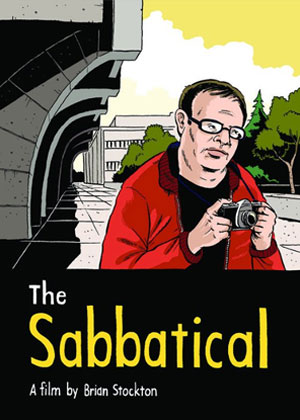
It’s been said that satire is best when seasoned with pathos. Before embarking on his sabbatical to publish a photography book, cynical middle-aged Professor James Pittman (played with deadpan perfection by James Whittingham) is urged by a superior to “make this next book thicker than the last”. It’s a scene of satire and poignancy that evokes empathy for James because you know that his creative block is the least of his problems. James battles a middle-aged crisis that mines the fears of aging men. When pushed by his workaholic wife, James sees a doctor about a vasectomy and ends up losing his drivers license. (There’s no explaining this. You have to see it.) Unable to drive himself to photography outings, James hires free-spirited twenty-something, Lucy (Laura Abramsen) as a driver. Thus forms an unlikely friendship that forces James to face the fact that he’s not getting any younger and there’s no going back.
Why You Might Like “The Sabbatical”
“The Sabbatical” takes the oft-examined topics of middle age angst and generation gaps and weaves them into deadpan humour. Comedian James Whittingham’s fine Improv skills are curated by director Brian Stockton to create scenes that feel organic instead of feeling like obvious Improv. On the surface “The Sabbatical” appears to be light entertainment but it stays in your thoughts long after the film is over. If you enjoy slice-of-life comedy delivered by a great cast – and especially if you’re a fan of Brian Whittingham, you’ll enjoy “The Sabbatical”.
You can read more about “The Sabbatical” in our interview with Director, Brian Stockton.
Written by Cathleen MacDonald
Cathleen MacDonald is a writer and filmmaker.
Meet the Makers: “The Sabbatical” Director, Brian Stockton
“Meet the Makers” is a series of interviews to introduce the filmmakers of the 2016 Willson Oakville Film Festival. Answers are edited for clarity and space.
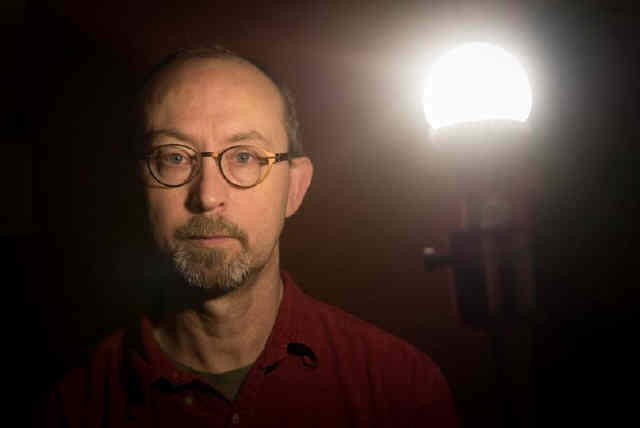
ABOUT THE FILMMAKER: BRIAN STOCKTON is a filmmaker and educator who works across genres, including drama, documentary and animation. He holds an MFA from York University and was a director resident at the Canadian Film Centre. His recent focus has been on humorous films including his acclaimed “Saskatchewan Trilogy” (2002-2006) and “My Dinner with Generation X” (2010). He currently teaches film production at the University of Regina. You can meet Brian at the Willson Oakville Film Festival on Sunday, June 26 following the 6:30PM screening of his film, “The Sabbatical”.
ABOUT THE FILM: “The Sabbatical” tells the story of burnt-out professor James Pittman who struggles with a middle-age crisis.
Q:Tell us about your approach to the film. How do you approach comedy and how did James Whittingham (who plays the lead, James Pittman) factor into it?
Brian: The film was built around James. We’ve known each other for about 30 years. We made a short film together and I felt it was time to do a feature. James’ strength as a comedian is improvisation. We used Improv to try different approaches and tones to find those things that worked best for the film. My goal was to make this movie as funny as possible, so I let James improvise some dialogue and actions within scenes. Once I saw the results, I’d use the shots that worked the best and were the funniest.
Q: James and his wife (played by Bernadette Mullen) have an interesting relationship. What’s going on between those two?
Brian: When James meets Lucy (the young woman he befriends), the obvious approach would have been to make the wife jealous. So we did the opposite. We made her busy with her own career and life and we made her the type to trust him. We thought it would be funnier this way rather than to make her the stereotypical jealous wife.
Q: You put James through a lot. What are you trying to say about men who are experiencing a middle-age crisis?
Brian: The perspective comes from experience. I’m a middle-aged man – though I have a great life and I’m happy with what I’m doing – but I’m aware that some people reach a point – life’s half-way point, where they wonder, ‘Did I make the right choices?’ James’ problems are very real and serious to him but they’re first world problems, so it’s funny. The film is saying, ‘Don’t take life too seriously’.
Q: Lucy (Laura Abramsen) helps James through some of his issues, though she’s about half his age. Help us understand their friendship.
Brian: Lucy is a lot younger but she’s as smart as James and in that way she’s his equal – she’s just not as experienced. Again, instead of the stereotypical older man – younger woman approach, we did the opposite, so the dynamic between them is more interesting.
Q: The scenes of James at Lucy’s place when he’s with her young friends show the divide between generations but it says something more. What’s the film telling us?
Brian: I think as we get older, at a certain age we become invisible to young people. As a professor I’m around young people a lot and I see this happening as old people complain about the younger generation and younger people ignore or complain about old people. James needs to resolve his issues but first he has to face that he isn’t the same guy anymore. Being in these situations with younger people forces him to do that.
Q: What do you want the audience to get from “The Sabbatical”?
Brian: I love making people laugh. I want people to leave the theatre with smiles on their faces. Drama is often considered to be the most important film genre but I think comedy is just as important.
Q: What else do you want to say about “The Sabbatical”?
Brian: It’s a slice of life; not overly structured or contrived. Some people might think it doesn’t follow a conventional approach for movies and some people might think it’s issues aren’t big enough. Some movies are about saving the world but I like movies that are about the little things in life. Those little things are important.
Interview by Cathleen MacDonald
Cathleen MacDonald is a writer and filmmaker.
Films to See: “The Demons (Les Demons)”
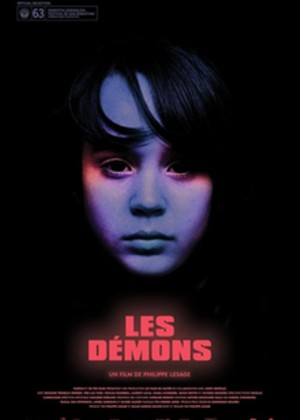 Childhood fears, real and imagined, drive this story of a sensitive young boy whose life in 1980’s Montreal suburbia is complicated by family instability and outside threats. The ‘demons’ are initially implied to be the inner demons plaguing imaginative young Felix, whose fears range from parental discord to AIDS and the news of abducted boys. Director Philippe Lesage uses a measured pace, naturalistic performances, and a paradoxically realistic setting to create unease and set us up for the provocative and unsettling later scenes that reveal the real demon in the midst.
Childhood fears, real and imagined, drive this story of a sensitive young boy whose life in 1980’s Montreal suburbia is complicated by family instability and outside threats. The ‘demons’ are initially implied to be the inner demons plaguing imaginative young Felix, whose fears range from parental discord to AIDS and the news of abducted boys. Director Philippe Lesage uses a measured pace, naturalistic performances, and a paradoxically realistic setting to create unease and set us up for the provocative and unsettling later scenes that reveal the real demon in the midst.
Why You Might Like “The Demons”
“The Demons” is stimulating cinema for the perceptive cinephile. The lingering, carefully composed shots reveal more than what is on the surface and the film draws us into the child’s world where we can reconnect with feelings of curiosity, vulnerability, and anxiety. In a daring move, the film turns imaginative fears into a real threat that might be disturbing for some viewers. This dark turn is masterfully handled to bring the story to a meaningful conclusion. If you love an arthouse psychological thriller drama, you should see “The Demons”. You can view the trailer and buy tickets for “The Demons” here.
Written by Cathleen MacDonald
Cathleen MacDonald is a writer and filmmaker.


